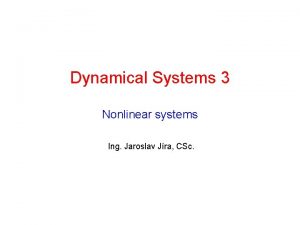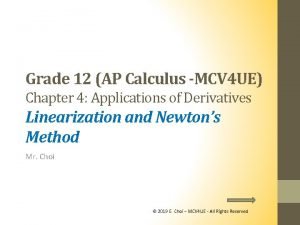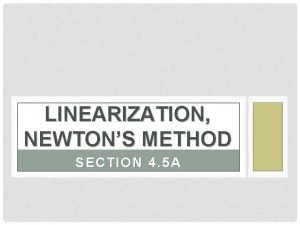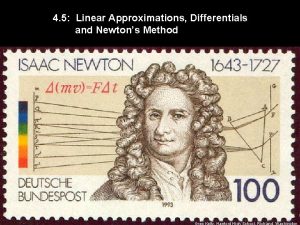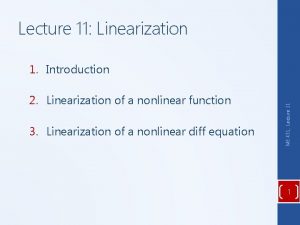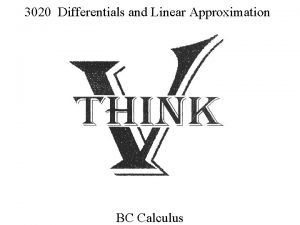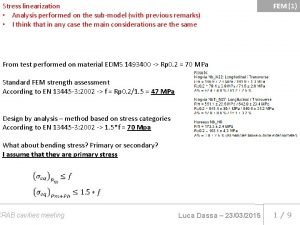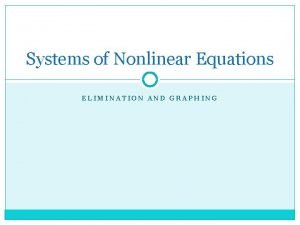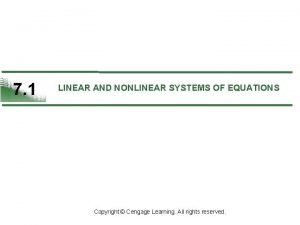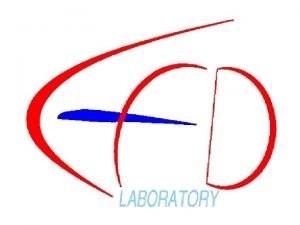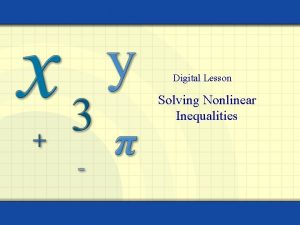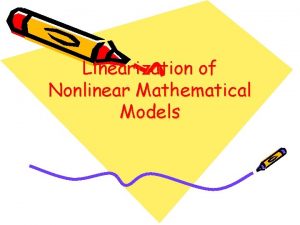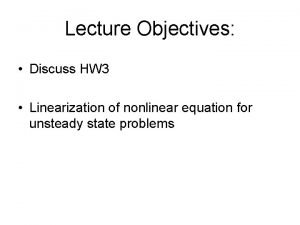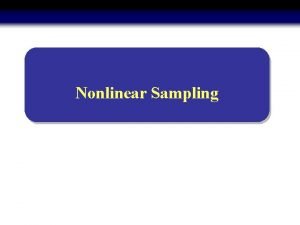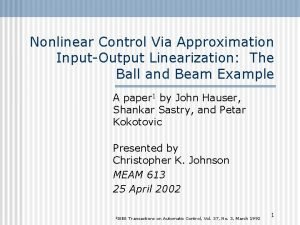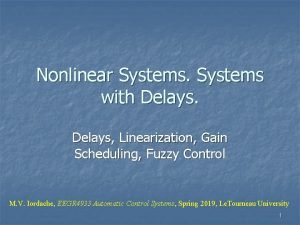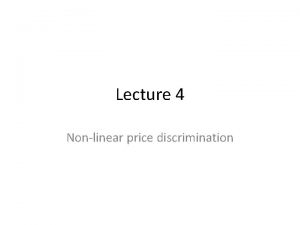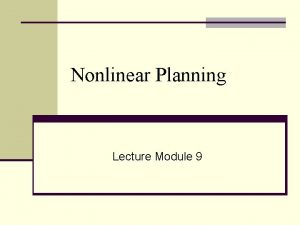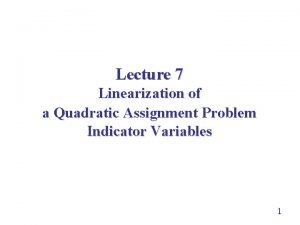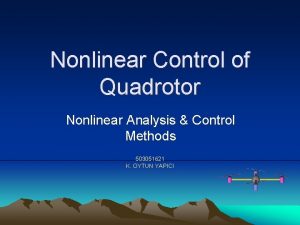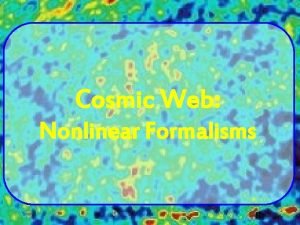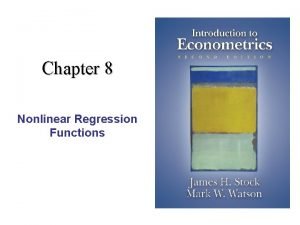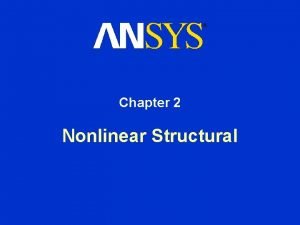Lecture 11 Linearization 2 Linearization of a nonlinear
















- Slides: 16

Lecture 11: Linearization 2. Linearization of a nonlinear function 3. Linearization of a nonlinear diff equation ME 431, Lecture 11 1. Introduction 1

Nonlinear Systems • Most real world systems are nonlinear in some respect • Nonlinear differential equations are difficult, if not impossible, to solve analytically • Transfer functions model only linear systems • Previously in the course we have numerically simulated nonlinear systems to determine behavior … difficult to design in this manner, can lack insight ME 431, Lecture 11 • Friction, air drag, saturation, backlash 2

Nonlinear Systems • Nonlinear functions can approximated by a linear function in a neighborhood about an operating point First two terms of a Taylor series expansion

Linearization of a Function • Higher order terms (H. O. T. )

Example _ • Linearize f(v)=av 2 about v=v

Example _ • Linearize f(θ)=mgl sin θ about θ = θ

Nonlinear Systems • This same idea can be used for providing approximate models of nonlinear systems • Nonlinear diff eq Linear diff eq in terms of deviation from the operating point (Δ) • These approximate models are only valid in a small neighborhood about the operating point

• First thing that must be done is to identify the operating point about which to linearize • Since the operating point is an equilibrium solution of the dynamic equation, the derivatives must equal zero. • Therefore, if x=f(x, u), the equilibrium solution _ _ is found from 0=f(x, u) where x and u are constants ME 431, Lecture 11 Linearizing Differential Equations 8

Example _ _ • Find the equilibrium solution (v, F) of F f(v) av 2 . = mv F

Example __ . . • Find the equilibrium solution (τ, θ) of τ - mgl sin θ =Jθ

Overall Procedure • ME 431, Lecture 11 __ _ _ 11

Example • Linearize the differential_equation F for nominal input force F av 2 . = mv,

Example (continued) • Simulink model of linearized equation

Example. . • Linearize the differential equation τ - mgl sin θ =Jθ, _ for nominal input torque τ

Example • Linearize the differential equation , for a nominal input of u = 6

Example (continued)
 Linearization of nonlinear systems about equilibrium point
Linearization of nonlinear systems about equilibrium point Nonlinear regression lecture notes
Nonlinear regression lecture notes 01:640:244 lecture notes - lecture 15: plat, idah, farad
01:640:244 lecture notes - lecture 15: plat, idah, farad Mcv4ue
Mcv4ue Linearization formula
Linearization formula Linearization formula
Linearization formula Total differential
Total differential Linearizarion
Linearizarion When does newton's method fail
When does newton's method fail Linearizarion
Linearizarion Remnote updates
Remnote updates Stress linearization
Stress linearization Graphing systems of nonlinear equations
Graphing systems of nonlinear equations Nonlinear systems of equations worksheet
Nonlinear systems of equations worksheet Nonlinear model
Nonlinear model Graphing nonlinear inequalities
Graphing nonlinear inequalities Nlad ansys
Nlad ansys
